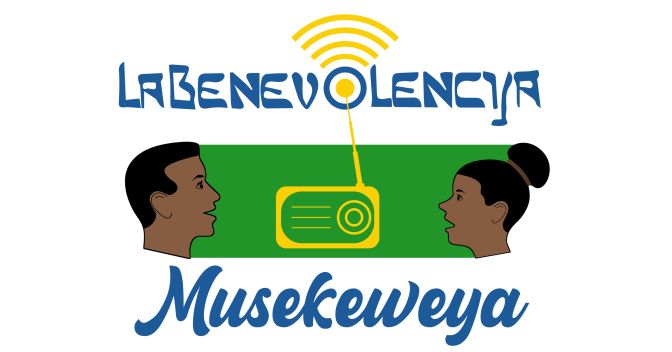Trigger warning: gendered violence, psychological trauma
The aftermath of the 1994 Rwandan Genocide, in which 800,000 members of the country’s Tutsi minority were killed by armed groups belonging to the Hutu majority, saw widespread institutional transformation to both national and international peacebuilding. Continued UN hesitancy to intervene in the preparatory stages of the genocide provided a key impetus for the subsequent development of Responsibility to Protect, which emphasised an international obligation to intervene in instances of large-scale killings or violations of humanitarian law which sovereign national governments proved unwilling or unable to prevent. Domestic efforts within Rwanda to address the consequences of the genocide similarly centred on the development of institutions, ranging from the formulation of a national civic education programme aimed at creating a national ‘Rwandan’ identity which transcended ethnic divisions, to the employment of traditional gacaca trials to promote individual-level accountability and justice within communities. While the country is, undoubtedly, a peaceful state, with no recurrence of the systematic violence seen in 1994, it is far from a nation ‘at peace‘, a reality reflected by pervasive sentiments of suspicion and fear between Hutu and Tutsi communities.

Beginning in 2004, the Dutch non-governmental organisation Radio La Benevolencija began partnering with local media organisations to help address this. The result was Musekeweya or ‘New Dawn’, a radio soap drama programme recounting the aftermath of conflict between two villages – Bumanzi and Muhumuro. This extract begins with Bumanzi resident Yuliana describing the overwhelming fear and shock she experienced after seeing her Muhumuro attacker, Kananga, walking freely. The audience is then introduced to the character of Mukahirwa, a counsellor from Muhumuro who now works to facilitate trauma healing and dispute resolutions between members of the opposing villages. Despite her initial hesitancy, Yuliana is encouraged by Mukahirwa to speak of her experiences, not only to her fellow citizens of Bumanzi, but also to those of Muhumuro. As Mukahirwa states:
‘When you talk about what happened, it eases your pain. It is from remembering bad experiences that people heal their wounds.’
Mukahirwa, Musekeweya (New Dawn)
The Power of Narrative-Driven Peacebuilding
Much of my research into the implementation of behavioural psychology into the field of peacebuilding has centred on the theory of intergroup contact: that individuals who interact with those belonging to different social groups are less likely to exhibit prejudice towards out-group members, as positive attitudes stemming from these encounters with single group members are disseminated and generalised to encompass the out-group as a whole. This degree of contact is fundamental in the context of post-conflict peacebuilding, serving not only to challenge simplified perceptions of the out-group but also to increase one’s willingness to consider a former adversary’s understanding of a historical conflict. Intergroup contact activities, however, face two primary difficulties in Rwanda: direct mentions of Hutu and Tutsi ethnicities are prohibited by the state, and both communities remain gripped by sentiments of fear, anger, and mistrust.
It is in addressing these challenges which inhibit intergroup contact that mass media, such as the Musekeweya radio soap drama, can play a crucial role. The programme’s narrative is, firstly, situated in an entirely fictional context, exploring the aftermath of a brutal conflict between the villages of Bumanzi and Muhumuro. Though this imagined setting avoids any direct reference to Rwanda’s ethnic groups, thereby circumventing national censorship, both villages serve as microcosmic allegories for Hutus and Tutsis. The history of intercommunal tensions lays the foundation for the programme’s basic plot; but it is the presence of bridging characters seeking to forge relations with their respective out-groups that is central to the Musekeweya narrative. Whether through the evolving romantic relationship between Batamuriza of Muhumuro and Shema of Bumanzi or the work of counsellor Mukahirwa to encourage both villages to speak to one another of their experiences, the conceptualisation of peace propagated by Musekeweya centres not on overshadowing the trauma of the past but on actively confronting it together. This narrative of peace has already had a tangible impact on Rwanda’s population; one 2013 study, for instance, found that exposure to Musekeweya’s characters and messages resulted in a marked decrease in competitive victimhood, exhibited through statements such as ‘no other group in Rwanda has suffered the same way my group has’, and a growing perception of similarity between the suffering of one’s in-group’s and adversarial out-group’s. In this sense, the story of Musekeweya serves as a powerful example of the effectiveness of both visualisations of peace centred on active engagement with one’s former adversaries and the employment of mass media to set favourable psychological conditions for this inter-group contact to occur.
What do you Think?
- What role do you see inter-group contact playing in peacebuilding? Have you come across other examples in different places or time periods?
- Is the use of popular media alone sufficient to lay strong foundations for post-conflict reconciliation? How might it be incorporated into broader peacebuilding efforts?
- How do you see the integration of mass media into contemporary peacebuilding efforts evolving, given the continuous advancements, and associated dangers, of communications technology?
- Does this example of a socio-psychological intervention change how you visualise the places where peacebuilding takes place and the people involved? For example, how does it fit into the ‘top-down’ or ‘bottom-up’ models of peacebuilding that academics and practitioners often contrast with each other? And what does it teach us about individual agency and institutional influences?
If you enjoyed this item in our museum…
You might also like ‘Creating Peace in Post-Conflict Society: The use of Intergroup Contact Theory‘, ‘(Imperfect) Justice via Gacaca in Rwanda‘, ‘Generation Peace‘, and ‘Morning Light and Peace after Radicalisation‘.
Mathias Katsuya, April 2023